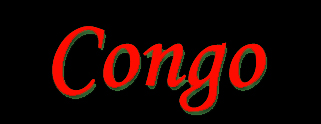

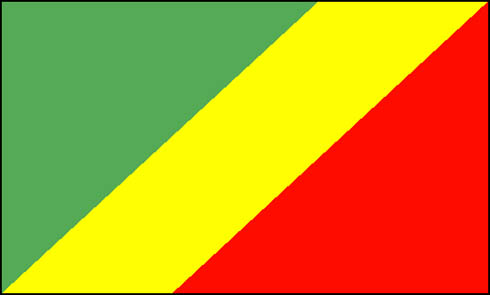
Country name:
Conventional long form: Republic of the Congo
Conventional short form: Congo (Brazzaville)
Local long form: Republique du Congo
Local short form: none
Former: Middle Congo, Congo/Brazzaville, Congo
Government type:republic
Capital: Brazzaville
Administrative divisions: 10 regions (regions, singular - region) and 1 commune*; Bouenza, Brazzaville*, Cuvette, Cuvette-Ouest, Kouilou, Lekoumou, Likouala, Niari, Plateaux, Pool, Sangha
Independence: 15 August 1960 (from France)
National holiday: Independence Day, 15 August (1960)
Constitution: Constitution approved by referendum 20 January 2002
Legal system: based on French civil law system and customary law
Suffrage: 18 years of age; universal
Executive branch: chief of state: President Denis SASSOU-NGUESSO (since 25 October 1997, following the civil war in which he toppled elected president Pascal LISSOUBA); note - the president is both the chief of state and head of government head of government: President Denis SASSOU-NGUESSO (since 25 October 1997, following the civil war in which he toppled elected president Pascal LISSOUBA); note - the president is both the chief of state and head of government cabinet: Council of Ministers appointed by the president elections: president elected by popular vote for a seven-year term (eligible for a second seven-year term); election last held 10 March 2002 (next to be held NA 2009) election results: Denis SASSOU-NGUESSO reelected president; percent of vote - Denis SASSOU-NGUESSO 89.4%, Joseph Kignoumbi Kia MBOUNGOU 2.7%
Legislative branch: bicameral Parliament consists of the Senate (66 seats; members are elected by popular vote to serve five-year terms) and the National Assembly (137 seats; members are elected by popular vote to serve five-year terms) elections: Senate - last held 11 July 2002 (next to be held NA July 2007); National Assembly - last held 27 May and 26 June 2002 (next to be held by NA May 2007) election results: Senate - percent of vote by party - NA; seats by party - FDP 56, other 10; National Assembly - percent of vote by party - NA; seats by party - FDP 83, UDR 6, UPADS 3, other 45
Judicial branch: Supreme Court or Cour Supreme
Political parties and leaders: the most important of the many parties are the Democratic and Patriotic Forces or FDP (an alliance of Convention for Alternative Democracy, Congolese Labor Party or PCT, Liberal Republican Party, National Union for Democracy and Progress, Patriotic Union for the National Reconstruction, and Union for the National Renewal) [Denis SASSOU-NGUESSO, president]; Congolese Movement for Democracy and Integral Development or MCDDI [Michel MAMPOUYA]; Pan-African Union for Social Development or UPADS [Martin MBERI]; Rally for Democracy and Social Progress or RDPS [Jean-Pierre Thystere TCHICAYA, president]; Rally for Democracy and the Republic or RDR [Raymond Damasge NGOLLO]; Union for Democracy and Republic or UDR [leader NA]; Union of Democratic Forces or UFD [Sebastian EBAO]
Political pressure groups and leaders: Congolese Trade Union Congress or CSC; General Union of Congolese Pupils and Students or UGEEC; Revolutionary Union of Congolese Women or URFC; Union of Congolese Socialist Youth or UJSC
International organization participation: ACCT, ACP, AfDB, AU, BDEAC, CEMAC, FAO, FZ, G-77, IBRD, ICAO, ICCt, ICFTU, ICRM, IDA, IFAD, IFC, IFRCS, ILO, IMF, IMO, Interpol, IOC, IOM, ITU, MIGA, NAM, OPCW (signatory), UN, UNCTAD, UNESCO, UNIDO, UNOCI, UPU, WCL, WCO, WFTU, WHO, WIPO, WMO, WToO, WTO
Diplomatic representation in the US: chief of mission: Ambassador Serge MOMBOULI chancery: 4891 Colorado Avenue NW, Washington, DC 20011 telephone: [1] (202) 726-5500 FAX: [1] (202) 726-1860 Diplomatic representation from the US: chief of mission: Ambassador Robin R. SANDERS embassy: NA mailing address: NA telephone: [243] (88) 43608 note: the embassy is temporarily collocated with the US Embassy in the Democratic Republic of the Congo (US Embassy Kinshasa, 310 Avenue des Aviateurs, Kinshasa)
Flag description: divided diagonally from the lower hoist side by a yellow band; the upper triangle (hoist side) is green and the lower triangle is red; uses the popular pan-African colors of Ethiopia
Conventional long form: Republic of the Congo
Conventional short form: Congo (Brazzaville)
Local long form: Republique du Congo
Local short form: none
Former: Middle Congo, Congo/Brazzaville, Congo
Government type:republic
Capital: Brazzaville
Administrative divisions: 10 regions (regions, singular - region) and 1 commune*; Bouenza, Brazzaville*, Cuvette, Cuvette-Ouest, Kouilou, Lekoumou, Likouala, Niari, Plateaux, Pool, Sangha
Independence: 15 August 1960 (from France)
National holiday: Independence Day, 15 August (1960)
Constitution: Constitution approved by referendum 20 January 2002
Legal system: based on French civil law system and customary law
Suffrage: 18 years of age; universal
Executive branch: chief of state: President Denis SASSOU-NGUESSO (since 25 October 1997, following the civil war in which he toppled elected president Pascal LISSOUBA); note - the president is both the chief of state and head of government head of government: President Denis SASSOU-NGUESSO (since 25 October 1997, following the civil war in which he toppled elected president Pascal LISSOUBA); note - the president is both the chief of state and head of government cabinet: Council of Ministers appointed by the president elections: president elected by popular vote for a seven-year term (eligible for a second seven-year term); election last held 10 March 2002 (next to be held NA 2009) election results: Denis SASSOU-NGUESSO reelected president; percent of vote - Denis SASSOU-NGUESSO 89.4%, Joseph Kignoumbi Kia MBOUNGOU 2.7%
Legislative branch: bicameral Parliament consists of the Senate (66 seats; members are elected by popular vote to serve five-year terms) and the National Assembly (137 seats; members are elected by popular vote to serve five-year terms) elections: Senate - last held 11 July 2002 (next to be held NA July 2007); National Assembly - last held 27 May and 26 June 2002 (next to be held by NA May 2007) election results: Senate - percent of vote by party - NA; seats by party - FDP 56, other 10; National Assembly - percent of vote by party - NA; seats by party - FDP 83, UDR 6, UPADS 3, other 45
Judicial branch: Supreme Court or Cour Supreme
Political parties and leaders: the most important of the many parties are the Democratic and Patriotic Forces or FDP (an alliance of Convention for Alternative Democracy, Congolese Labor Party or PCT, Liberal Republican Party, National Union for Democracy and Progress, Patriotic Union for the National Reconstruction, and Union for the National Renewal) [Denis SASSOU-NGUESSO, president]; Congolese Movement for Democracy and Integral Development or MCDDI [Michel MAMPOUYA]; Pan-African Union for Social Development or UPADS [Martin MBERI]; Rally for Democracy and Social Progress or RDPS [Jean-Pierre Thystere TCHICAYA, president]; Rally for Democracy and the Republic or RDR [Raymond Damasge NGOLLO]; Union for Democracy and Republic or UDR [leader NA]; Union of Democratic Forces or UFD [Sebastian EBAO]
Political pressure groups and leaders: Congolese Trade Union Congress or CSC; General Union of Congolese Pupils and Students or UGEEC; Revolutionary Union of Congolese Women or URFC; Union of Congolese Socialist Youth or UJSC
International organization participation: ACCT, ACP, AfDB, AU, BDEAC, CEMAC, FAO, FZ, G-77, IBRD, ICAO, ICCt, ICFTU, ICRM, IDA, IFAD, IFC, IFRCS, ILO, IMF, IMO, Interpol, IOC, IOM, ITU, MIGA, NAM, OPCW (signatory), UN, UNCTAD, UNESCO, UNIDO, UNOCI, UPU, WCL, WCO, WFTU, WHO, WIPO, WMO, WToO, WTO
Diplomatic representation in the US: chief of mission: Ambassador Serge MOMBOULI chancery: 4891 Colorado Avenue NW, Washington, DC 20011 telephone: [1] (202) 726-5500 FAX: [1] (202) 726-1860 Diplomatic representation from the US: chief of mission: Ambassador Robin R. SANDERS embassy: NA mailing address: NA telephone: [243] (88) 43608 note: the embassy is temporarily collocated with the US Embassy in the Democratic Republic of the Congo (US Embassy Kinshasa, 310 Avenue des Aviateurs, Kinshasa)
Flag description: divided diagonally from the lower hoist side by a yellow band; the upper triangle (hoist side) is green and the lower triangle is red; uses the popular pan-African colors of Ethiopia
Background:
Upon independence in 1960, the former French region of Middle Congo became the Republic of the Congo. A quarter century of experimentation with Marxism was abandoned in 1990 and a democratically elected government installed in 1992. A brief civil war in 1997 restored former Marxist President SASSOU-NGUESSO, but ushered in a period of ethnic unrest. Southern-based rebel groups agreed to a final peace accord in March 2003. The Republic of Congo is one of Africa's largest petroleum producers with significant potential for offshore development.
Upon independence in 1960, the former French region of Middle Congo became the Republic of the Congo. A quarter century of experimentation with Marxism was abandoned in 1990 and a democratically elected government installed in 1992. A brief civil war in 1997 restored former Marxist President SASSOU-NGUESSO, but ushered in a period of ethnic unrest. Southern-based rebel groups agreed to a final peace accord in March 2003. The Republic of Congo is one of Africa's largest petroleum producers with significant potential for offshore development.
Population
2,998,040
note: estimates for this country explicitly take into account the effects of excess mortality due to AIDS; this can result in lower life expectancy, higher infant mortality and death rates, lower population and growth rates, and changes in the distribution of population by age and sex than would otherwise be expected (July 2004 est.)
Age structure: 0-14 years: 37.9% (male 571,224; female 563,723) 15-64 years: 58.5% (male 865,596; female 888,125) 65 years and over: 3.6% (male 45,093; female 64,279) (2004 est.)
Median age: total: 20.4 years male: 20 years female: 20.9 years (2004 est.)
Population growth rate: 1.42% (2004 est.)
Birth rate: 28.66 births/1,000 population (2004 est.)
Death rate: 14.49 deaths/1,000 population (2004 est.)
Net migration rate: 0 migrant(s)/1,000 population (2004 est.)
Sex ratio: at birth: 1.03 male(s)/female under 15 years: 1.01 male(s)/female 15-64 years: 0.98 male(s)/female 65 years and over: 0.7 male(s)/female total population: 0.98 male(s)/female (2004 est.)
Infant mortality rate: total: 93.86 deaths/1,000 live births male: 99.95 deaths/1,000 live births female: 87.59 deaths/1,000 live births (2004 est.)
Life expectancy at birth: total population: 49.51 years male: 48.51 years female: 50.55 years (2004 est.) Total fertility rate: 3.54 children born/woman (2004 est.)
HIV/AIDS - adult prevalence rate: 4.9% (2003 est.)
HIV/AIDS - people living with HIV/AIDS: 90,000 (2003 est.)
HIV/AIDS - deaths: 9,700 (2003 est.)
Nationality: noun: Congolese (singular and plural) adjective: Congolese or Congo
Ethnic groups: Kongo 48%, Sangha 20%, M'Bochi 12%, Teke 17%, Europeans and other 3% note: Europeans estimated at 8,500, mostly French, before the 1997 civil war; may be half that in 1998, following the widespread destruction of foreign businesses in 1997
Religions: Christian 50%, animist 48%, Muslim 2%
Languages: French (official), Lingala and Monokutuba (lingua franca trade languages), many local languages and dialects (of which Kikongo is the most widespread)
Literacy: definition: age 15 and over can read and write total population: 83.8% male: 89.6% female: 78.4% (2003 est.)
Age structure: 0-14 years: 37.9% (male 571,224; female 563,723) 15-64 years: 58.5% (male 865,596; female 888,125) 65 years and over: 3.6% (male 45,093; female 64,279) (2004 est.)
Median age: total: 20.4 years male: 20 years female: 20.9 years (2004 est.)
Population growth rate: 1.42% (2004 est.)
Birth rate: 28.66 births/1,000 population (2004 est.)
Death rate: 14.49 deaths/1,000 population (2004 est.)
Net migration rate: 0 migrant(s)/1,000 population (2004 est.)
Sex ratio: at birth: 1.03 male(s)/female under 15 years: 1.01 male(s)/female 15-64 years: 0.98 male(s)/female 65 years and over: 0.7 male(s)/female total population: 0.98 male(s)/female (2004 est.)
Infant mortality rate: total: 93.86 deaths/1,000 live births male: 99.95 deaths/1,000 live births female: 87.59 deaths/1,000 live births (2004 est.)
Life expectancy at birth: total population: 49.51 years male: 48.51 years female: 50.55 years (2004 est.) Total fertility rate: 3.54 children born/woman (2004 est.)
HIV/AIDS - adult prevalence rate: 4.9% (2003 est.)
HIV/AIDS - people living with HIV/AIDS: 90,000 (2003 est.)
HIV/AIDS - deaths: 9,700 (2003 est.)
Nationality: noun: Congolese (singular and plural) adjective: Congolese or Congo
Ethnic groups: Kongo 48%, Sangha 20%, M'Bochi 12%, Teke 17%, Europeans and other 3% note: Europeans estimated at 8,500, mostly French, before the 1997 civil war; may be half that in 1998, following the widespread destruction of foreign businesses in 1997
Religions: Christian 50%, animist 48%, Muslim 2%
Languages: French (official), Lingala and Monokutuba (lingua franca trade languages), many local languages and dialects (of which Kikongo is the most widespread)
Literacy: definition: age 15 and over can read and write total population: 83.8% male: 89.6% female: 78.4% (2003 est.)
Location:
Western Africa, bordering the South Atlantic Ocean, between Angola and Gabon
Geographic coordinates: 1 00 S, 15 00 E
Map references: Africa
Area: total: 342,000 sq km land: 341,500 sq km water: 500 sq km
Area - comparative: slightly smaller than Montana
Land boundaries: total: 5,504 km border countries: Angola 201 km, Cameroon 523 km, Central African Republic 467 km, Democratic Republic of the Congo 2,410 km, Gabon 1,903 km
Coastline: 169 km Maritime claims: territorial sea: 200 nm
Climate: tropical; rainy season (March to June); dry season (June to October); constantly high temperatures and humidity; particularly enervating climate astride the Equator
Terrain: coastal plain, southern basin, central plateau, northern basin
Elevation extremes: lowest point: Atlantic Ocean 0 m highest point: Mount Berongou 903 m
Natural resources: petroleum, timber, potash, lead, zinc, uranium, copper, phosphates, natural gas, hydropower
Land use: arable land: 0.51% permanent crops: 0.13% other: 99.36% (2001)
Irrigated land: 10 sq km (1998 est.)
Natural hazards: seasonal flooding
Environment - current issues: air pollution from vehicle emissions; water pollution from the dumping of raw sewage; tap water is not potable; deforestation
Environment - international agreements: party to: Biodiversity, Climate Change, Desertification, Endangered Species, Ozone Layer Protection, Tropical Timber 83, Tropical Timber 94, Wetlands signed, but not ratified: Law of the Sea
Geography - note: about 70% of the population lives in Brazzaville, Pointe-Noire, or along the railroad between them
Geographic coordinates: 1 00 S, 15 00 E
Map references: Africa
Area: total: 342,000 sq km land: 341,500 sq km water: 500 sq km
Area - comparative: slightly smaller than Montana
Land boundaries: total: 5,504 km border countries: Angola 201 km, Cameroon 523 km, Central African Republic 467 km, Democratic Republic of the Congo 2,410 km, Gabon 1,903 km
Coastline: 169 km Maritime claims: territorial sea: 200 nm
Climate: tropical; rainy season (March to June); dry season (June to October); constantly high temperatures and humidity; particularly enervating climate astride the Equator
Terrain: coastal plain, southern basin, central plateau, northern basin
Elevation extremes: lowest point: Atlantic Ocean 0 m highest point: Mount Berongou 903 m
Natural resources: petroleum, timber, potash, lead, zinc, uranium, copper, phosphates, natural gas, hydropower
Land use: arable land: 0.51% permanent crops: 0.13% other: 99.36% (2001)
Irrigated land: 10 sq km (1998 est.)
Natural hazards: seasonal flooding
Environment - current issues: air pollution from vehicle emissions; water pollution from the dumping of raw sewage; tap water is not potable; deforestation
Environment - international agreements: party to: Biodiversity, Climate Change, Desertification, Endangered Species, Ozone Layer Protection, Tropical Timber 83, Tropical Timber 94, Wetlands signed, but not ratified: Law of the Sea
Geography - note: about 70% of the population lives in Brazzaville, Pointe-Noire, or along the railroad between them
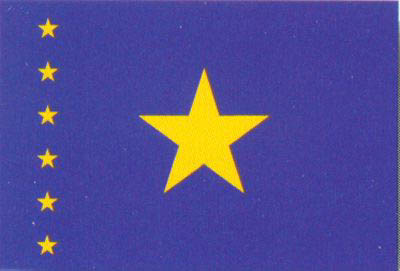
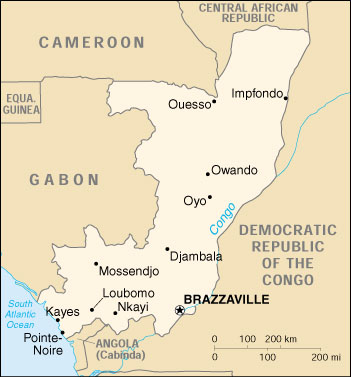
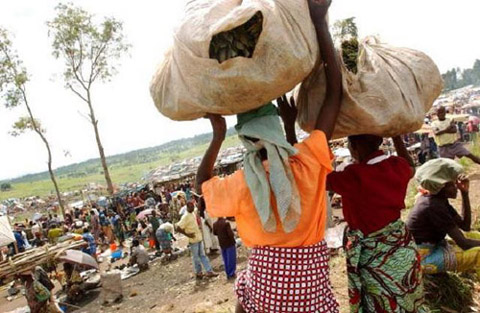
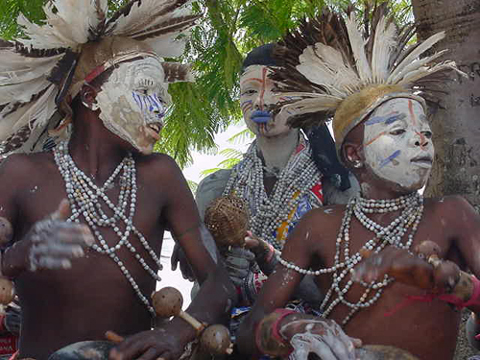
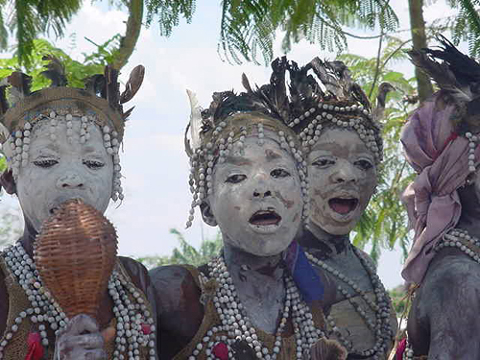
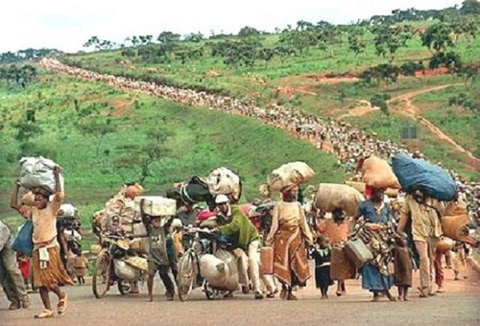
links and
such goes here
Hosted by www.Geocities.ws